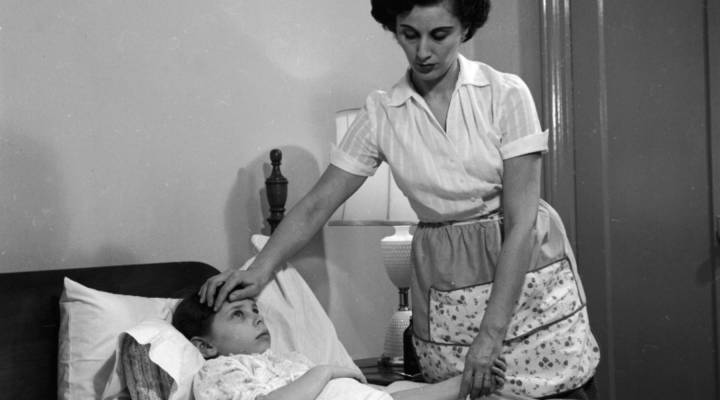
The future of hospital care could look a lot like home
The future of hospital care could look a lot like home

This election year, Marketplace is casting its eyes toward the future, asking how the country can address long-term opportunities and threats — the ones that don’t fit into a single federal budget or election cycle. We’ll imagine and ask you, if the next president were to appoint a Cabinet member to worry about future generations, what would be job one? Got an idea? Tell us here.
For more and more people, hospitals are just too expensive, but admissions – or what executives call “heads in beds” – is how the doors stay open. So will these hospitals keep making money if they have to radically change their business model?
For one answer, let’s go to Denver where nurse practitioner Drew Dawkins shakes a few Tylenols into a cup. Dancer-like, he twists and glides past the EKG machine, a case of meds, even a printer, toward his patient.
Despite the gear, this is not a hospital room.
It’s Neva Crawshaw’s bedroom at her assisted living facility in Denver, where she can get hospital-level care and still hear a live piano performance from the common room.
In effect, Dawkins has brought the hospital to Neva.
He works for DispatchHealth, a company that delivers at-home care for fevers and colds and more serious things, like mini-strokes and pneumonia.
Most people in Crawshaw’s condition – weak and confused at 99 years old – would be on the next ambulance out. That’s an all-but-guaranteed ticket to a hospital admission and a bill that could reach around $9,000.
Instead, this 90-minute visit won’t cost more than $300, all while Crawshaw’s kicking back in her blue EZ chair.
“We can’t do $9,000 treatments when there are $300 alternatives which are just as good,” said Bob Kocher, a health care sector venture capitalist with the firm Venrock.
There’s already a growing body of research to suggest this so-called “hospital-at-home” model leads to better quality care. Patients live longer, and costs go down between 20 to 30 percent. Peering into the future, the number of beds in hospitals will likely shrink, reserved for the severely ill.
Gary Campbell, the CEO of Centura Health — the largest hospital system in Colorado, said his company is bracing for this soon-to-be reality.
“We’ll do fewer medical interventions on individuals, but we’ll have many more people drawn to us because of our commitment to value,” he said. “Economically, that’s the balance.”
Overall, the hospitals that thrive won’t be the ones with the free parking and fancy lobbies.
They’ll probably be the ones that can get to your house faster than the pizza guy.
There’s a lot happening in the world. Through it all, Marketplace is here for you.
You rely on Marketplace to break down the world’s events and tell you how it affects you in a fact-based, approachable way. We rely on your financial support to keep making that possible.
Your donation today powers the independent journalism that you rely on. For just $5/month, you can help sustain Marketplace so we can keep reporting on the things that matter to you.


















